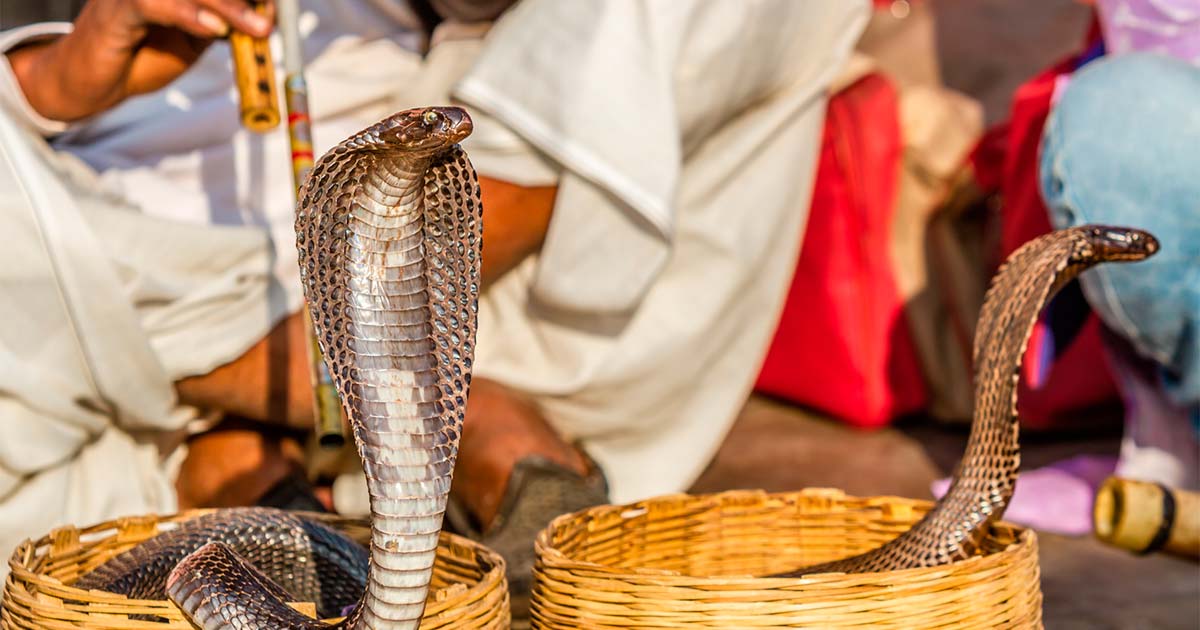The Ancient Indian Art of Snake Charming (Video)
Snake charming, deeply rooted in India's rich history, is a practice that has evolved over centuries. Its origins can be traced back to ancient times when it was often associated with mysticism and religious rituals. In those days, it wasn't just about entertaining crowds; it held a sacred significance. Historically, snake charmers were revered figures who possessed unique knowledge of handling venomous serpents, like cobras. They were often found in the courts of kings and were believed to possess supernatural abilities to communicate with and control these dangerous creatures.
These practitioners use traditional musical instruments such as the pungi, a wind instrument, to create entrancing melodies. The snakes, seemingly drawn by the music, sway rhythmically. However, it's not the music that enchants these reptiles; rather, it's the movements and vibrations of the charmer's hands and body. Over time, snake charming transformed into a form of entertainment, captivating audiences with its mesmerizing music and the seemingly magical swaying of cobras. It became a livelihood for many, especially among certain nomadic communities. However, in contemporary India, the practice has faced criticism due to concerns about animal welfare. Laws have been enacted to protect these reptiles from exploitation, leading to a decline in traditional snake charming.
- Dances with Snakes: The Real Reason for the Hopi Snake Dance
- Researchers Rediscover Species of Snake used as Biological and Psychological Weapon in Ancient Greece
Top image: Snake charming in India. Source: nilanewsom / Adobe Stock.

















